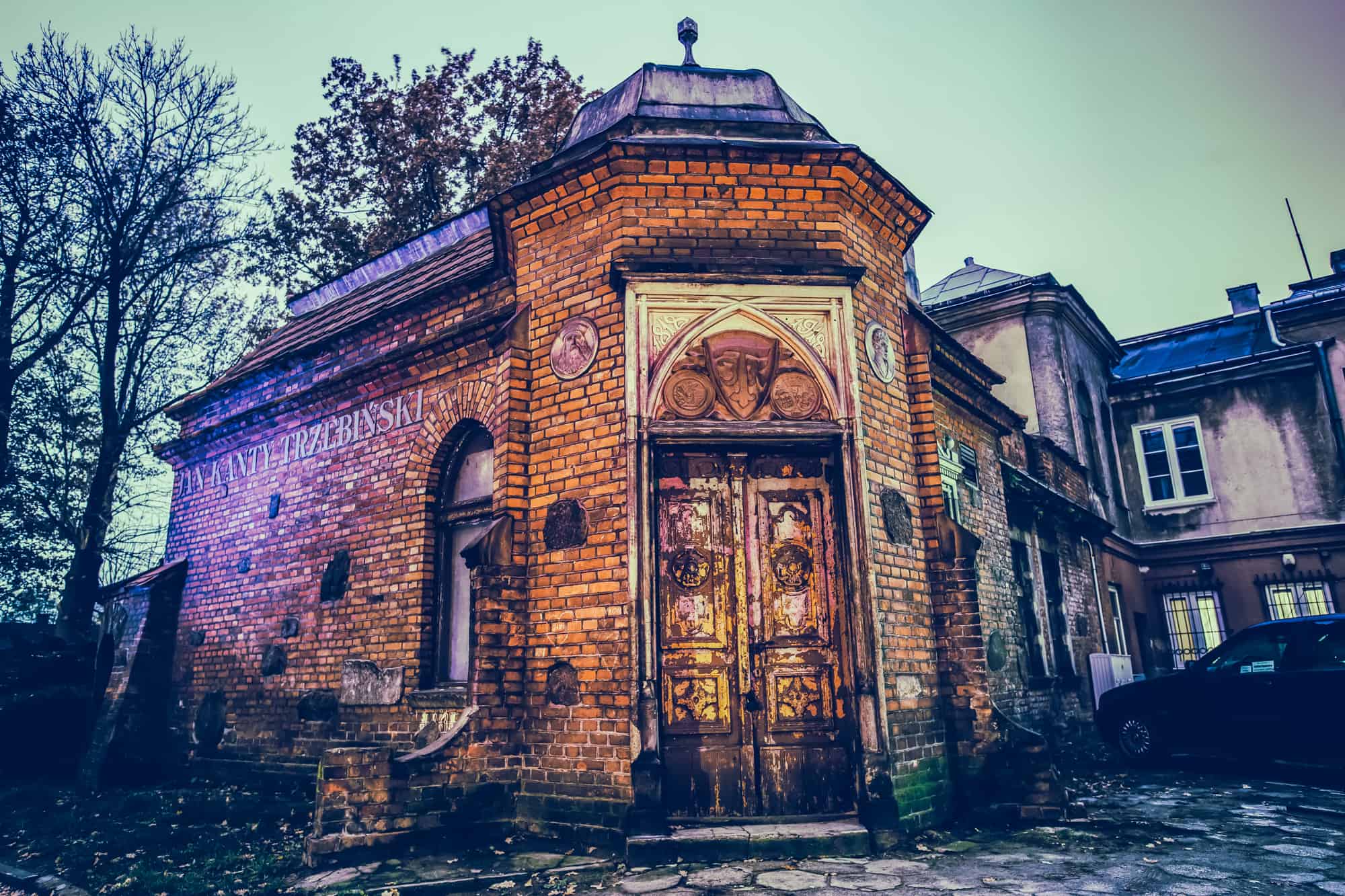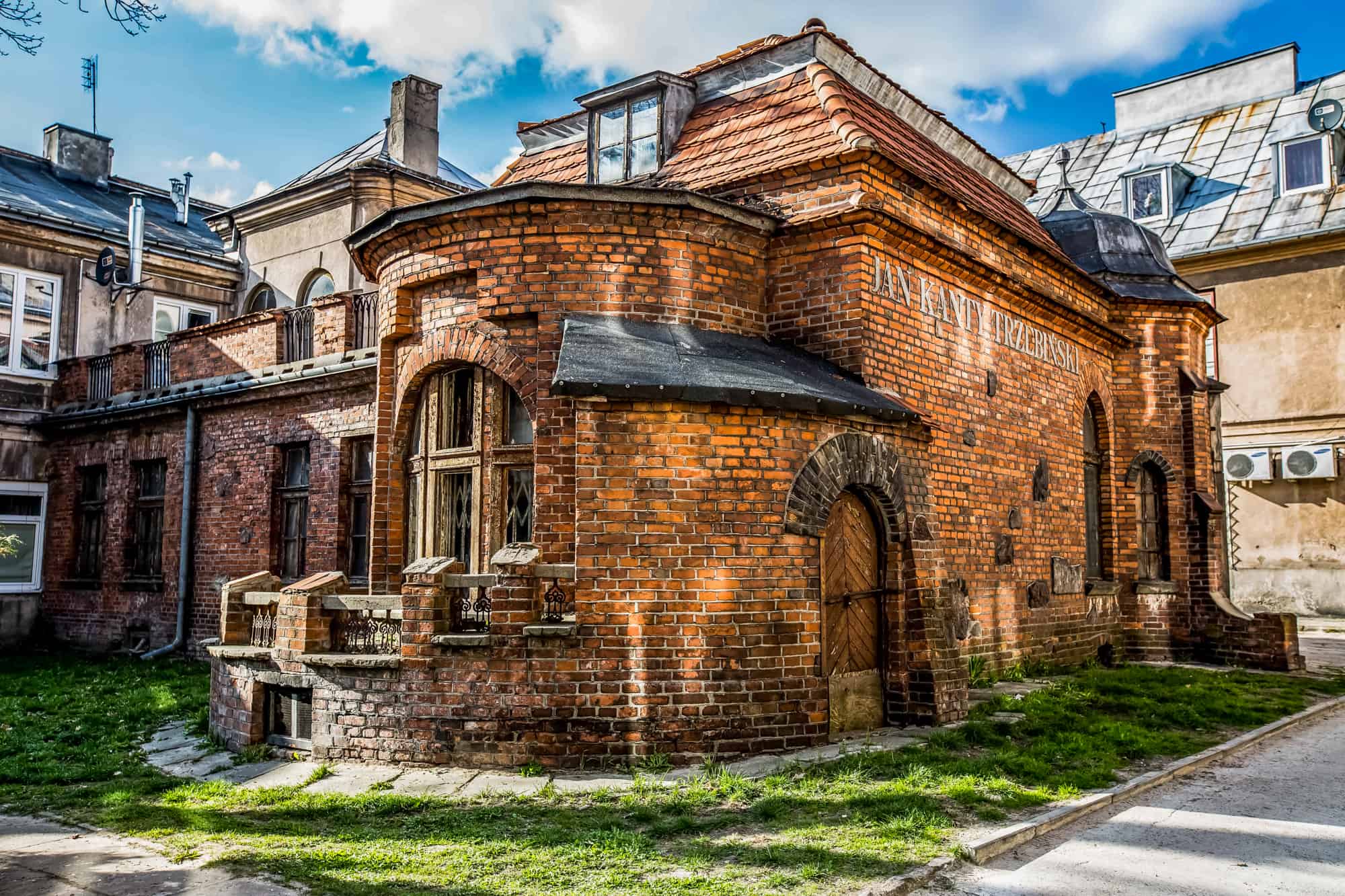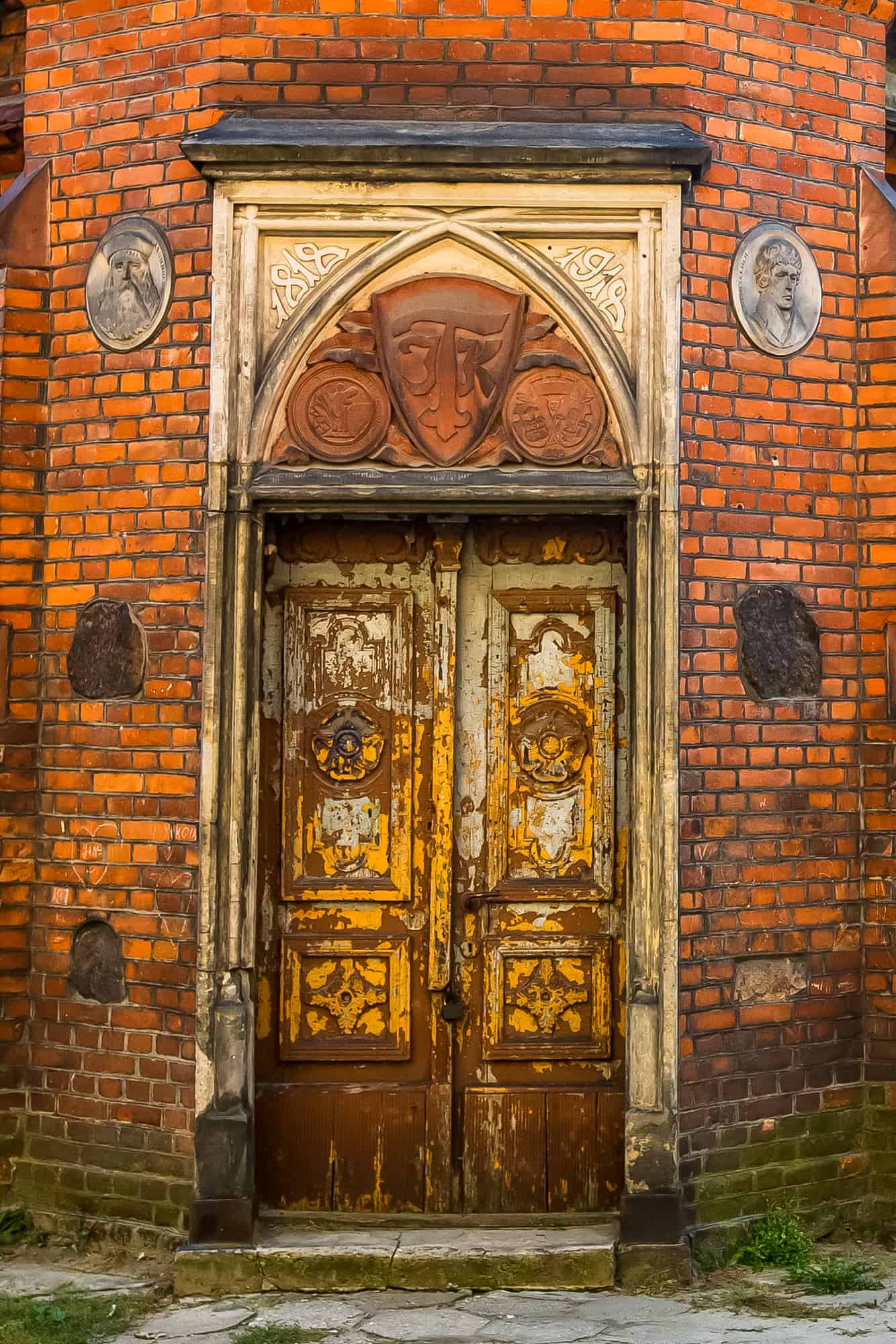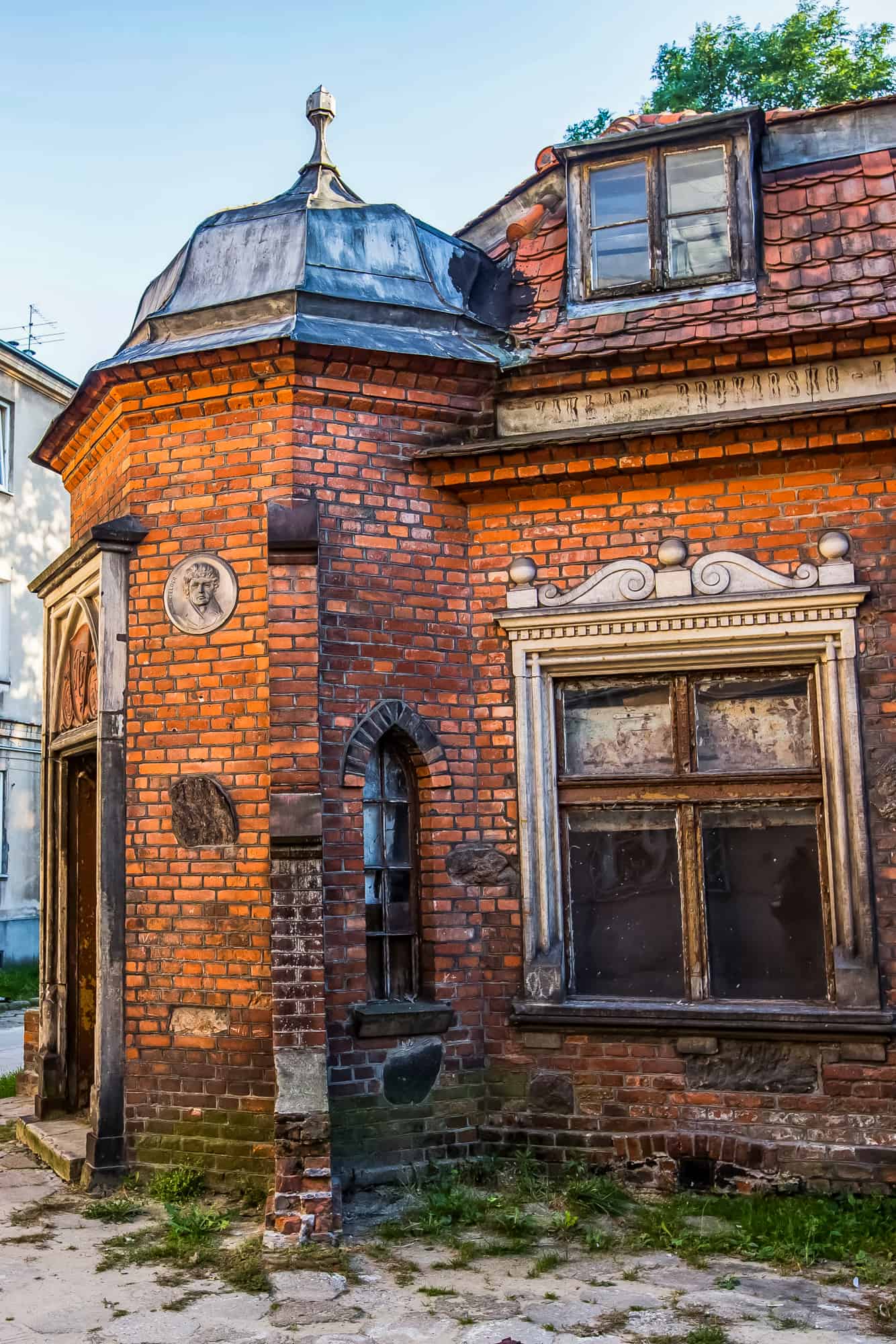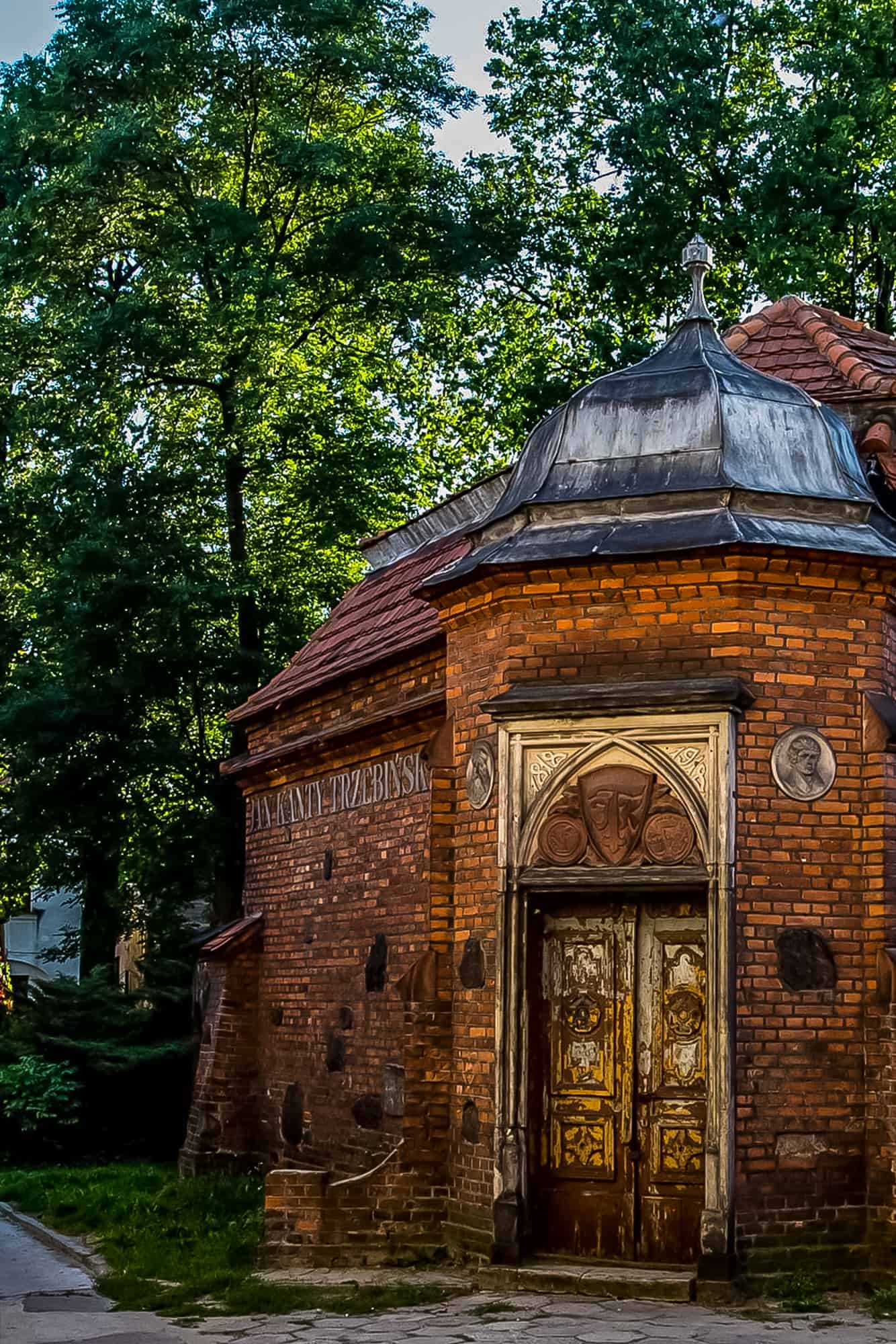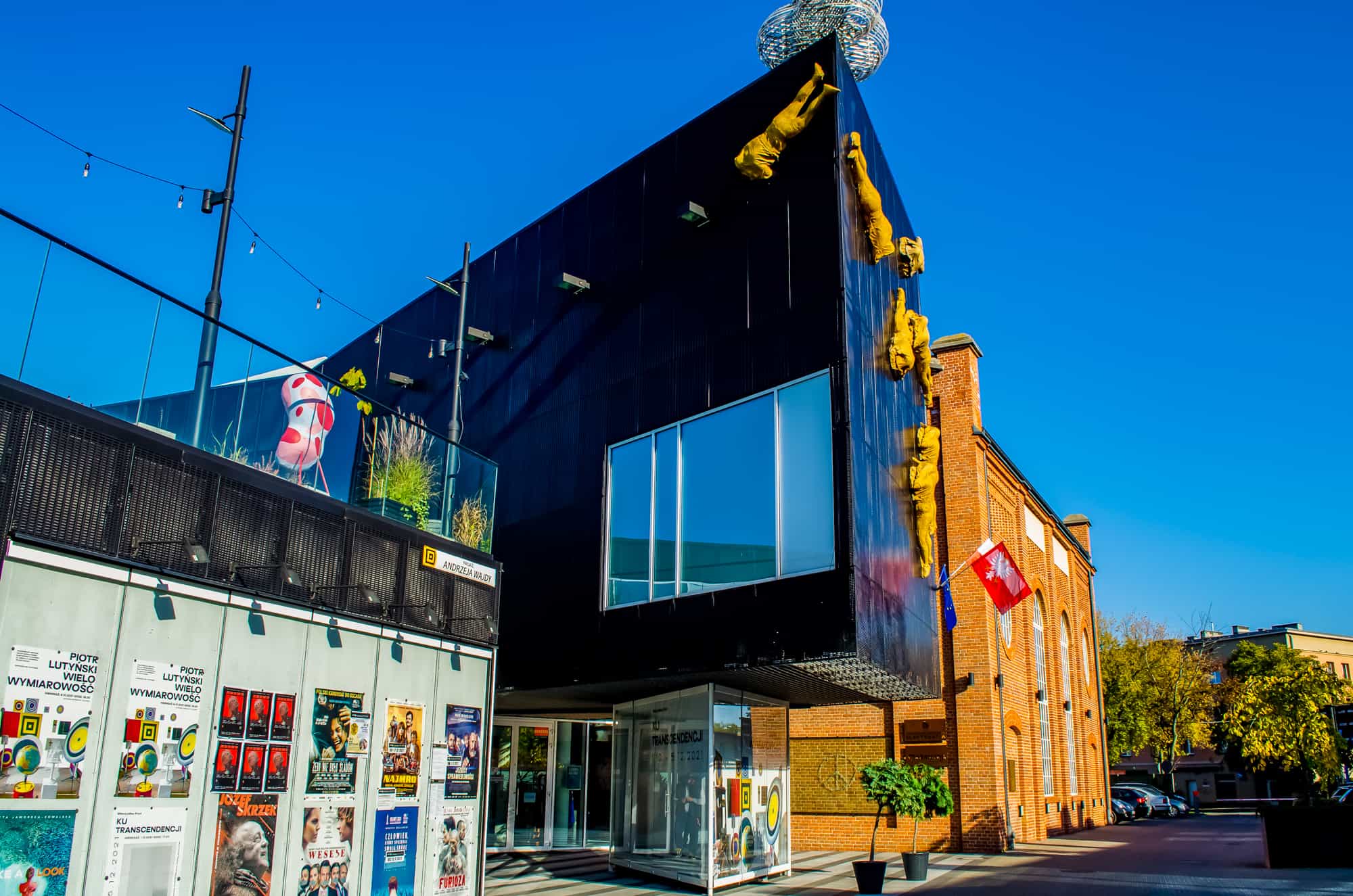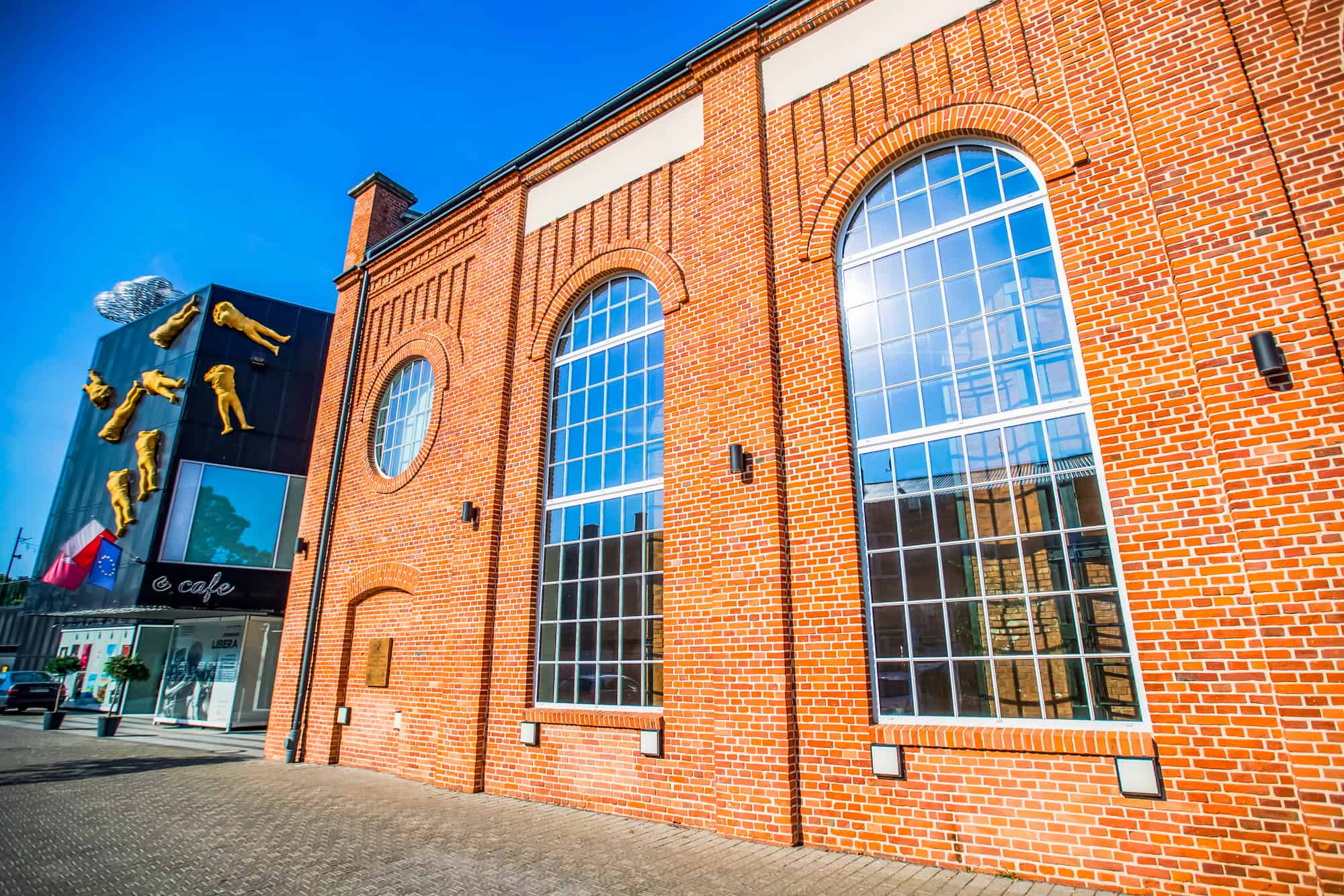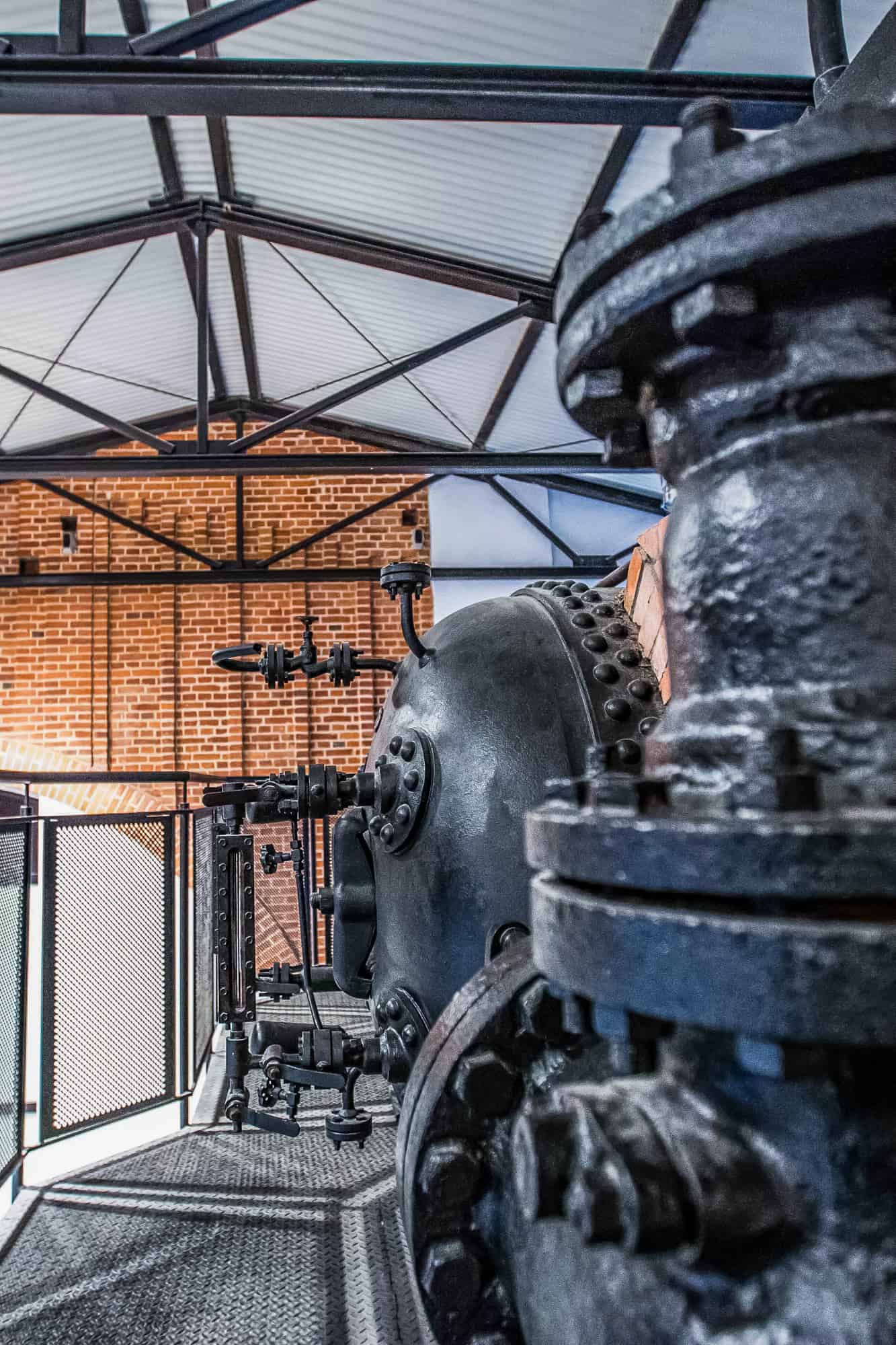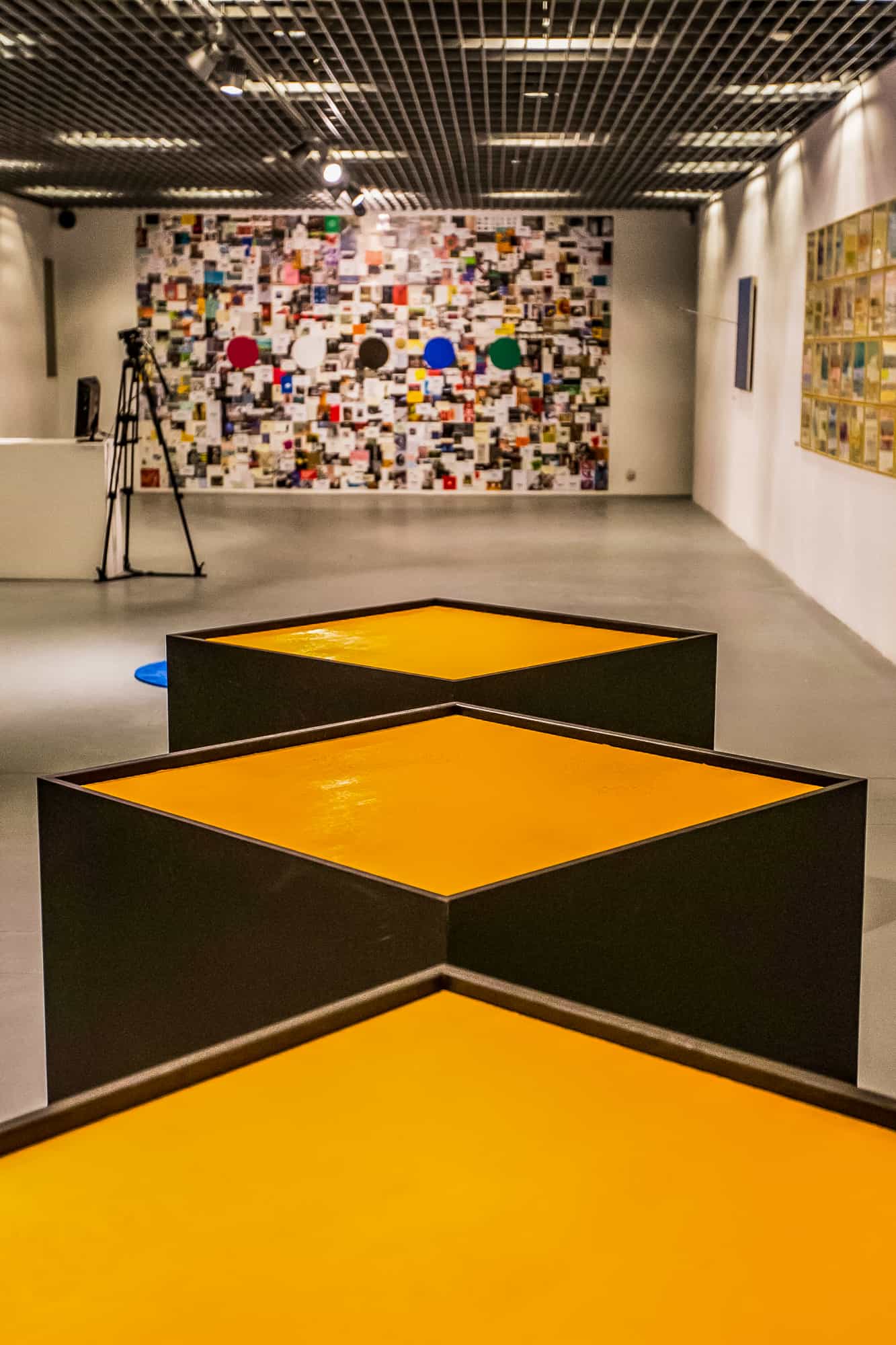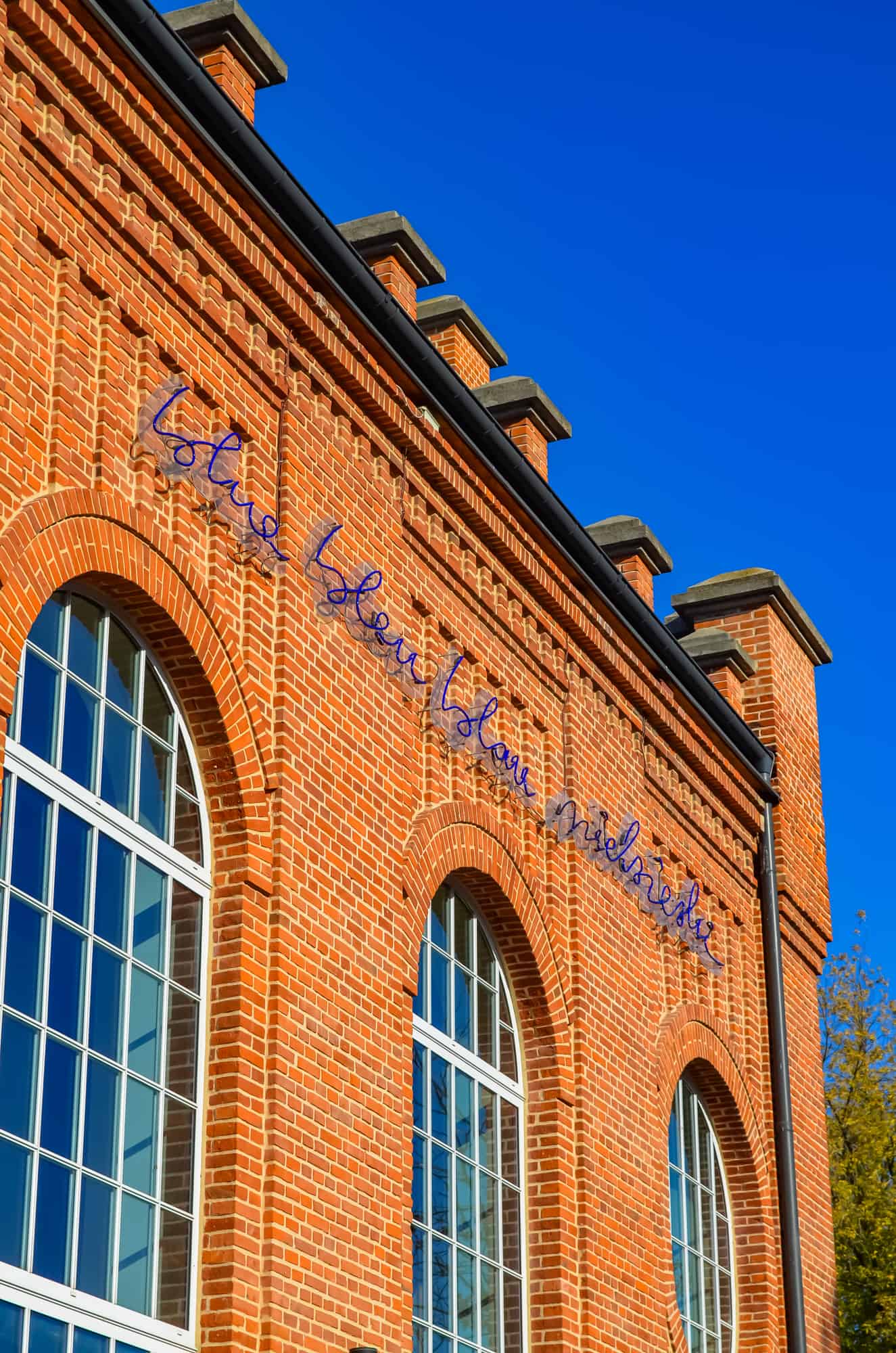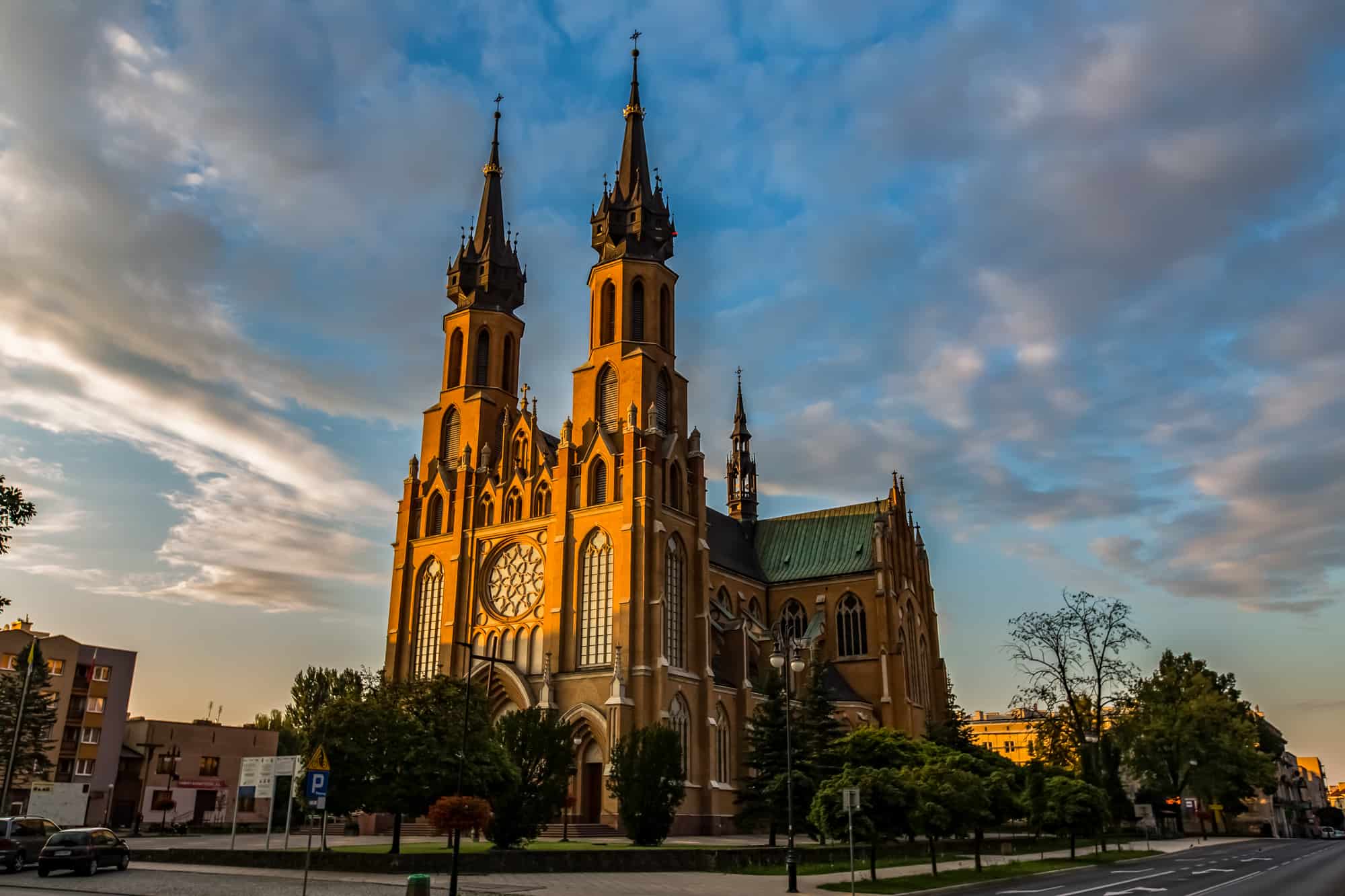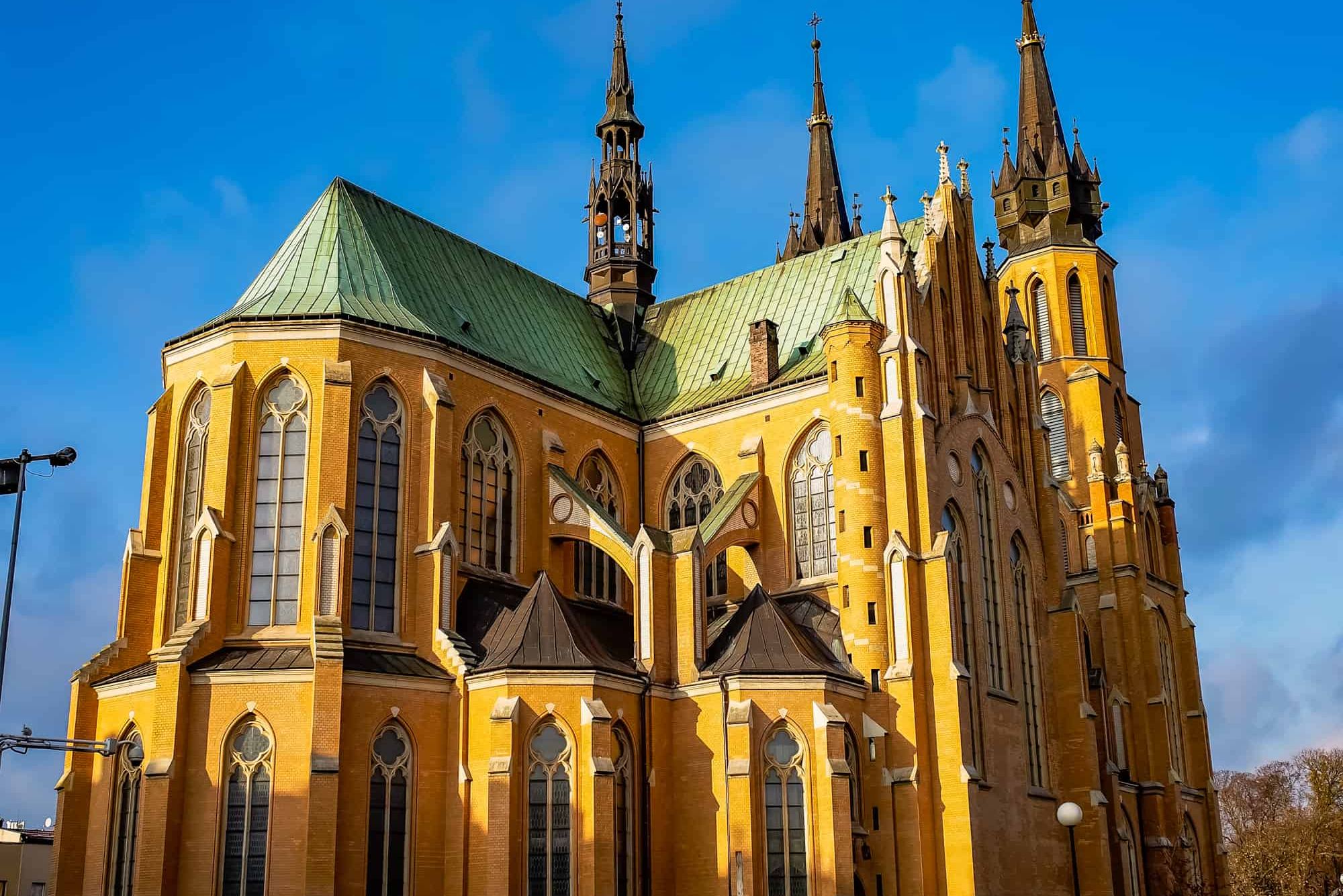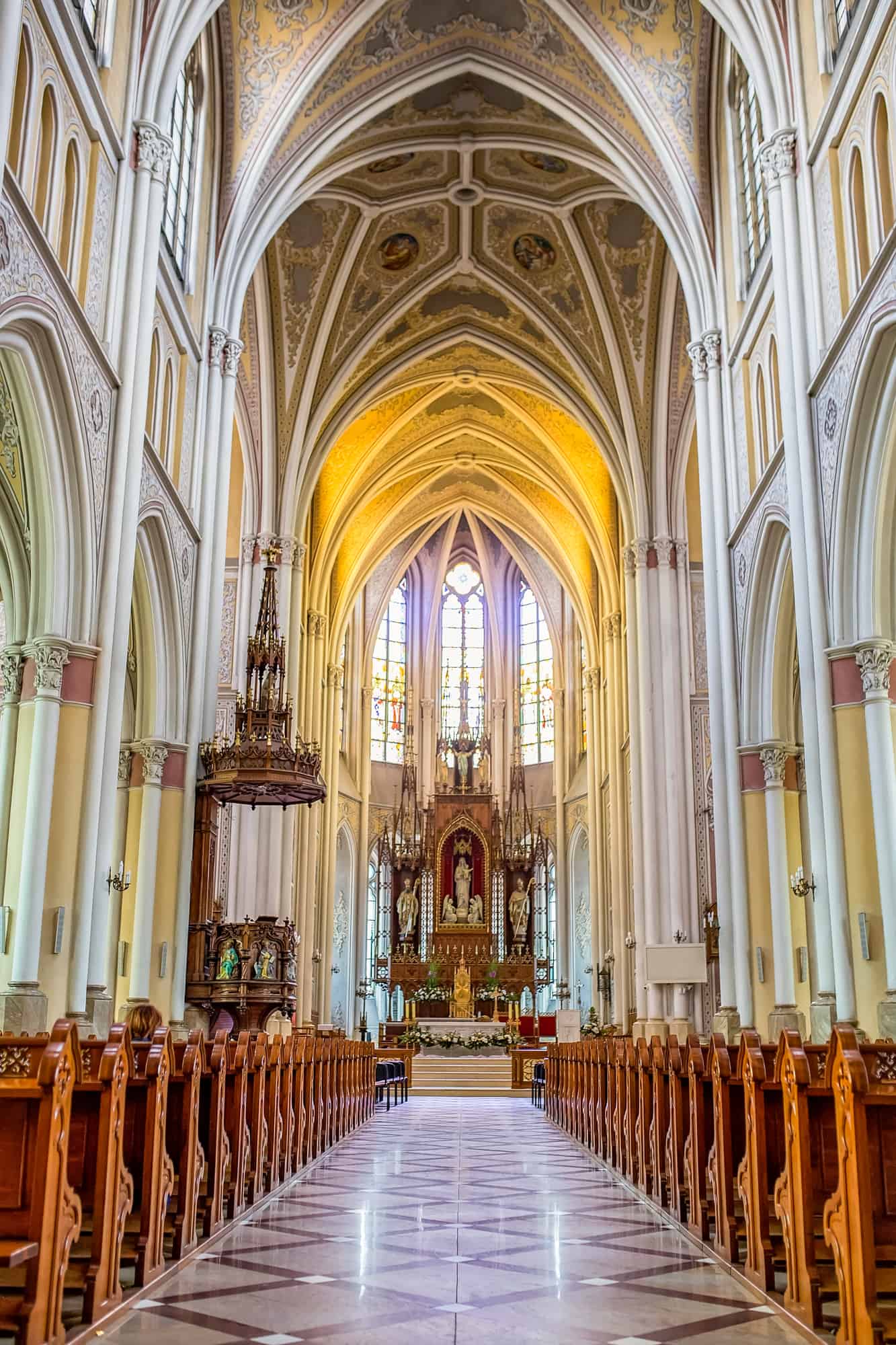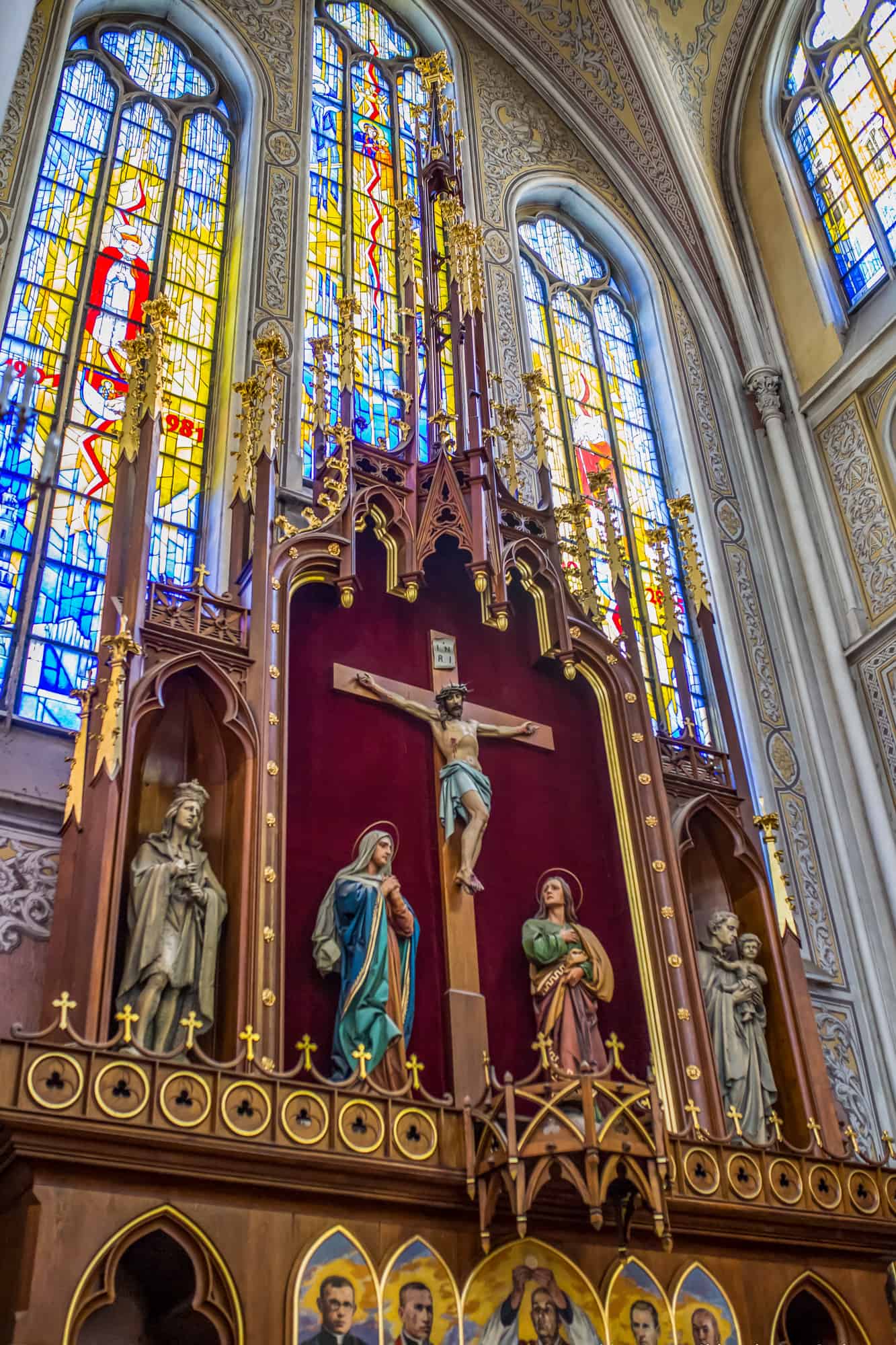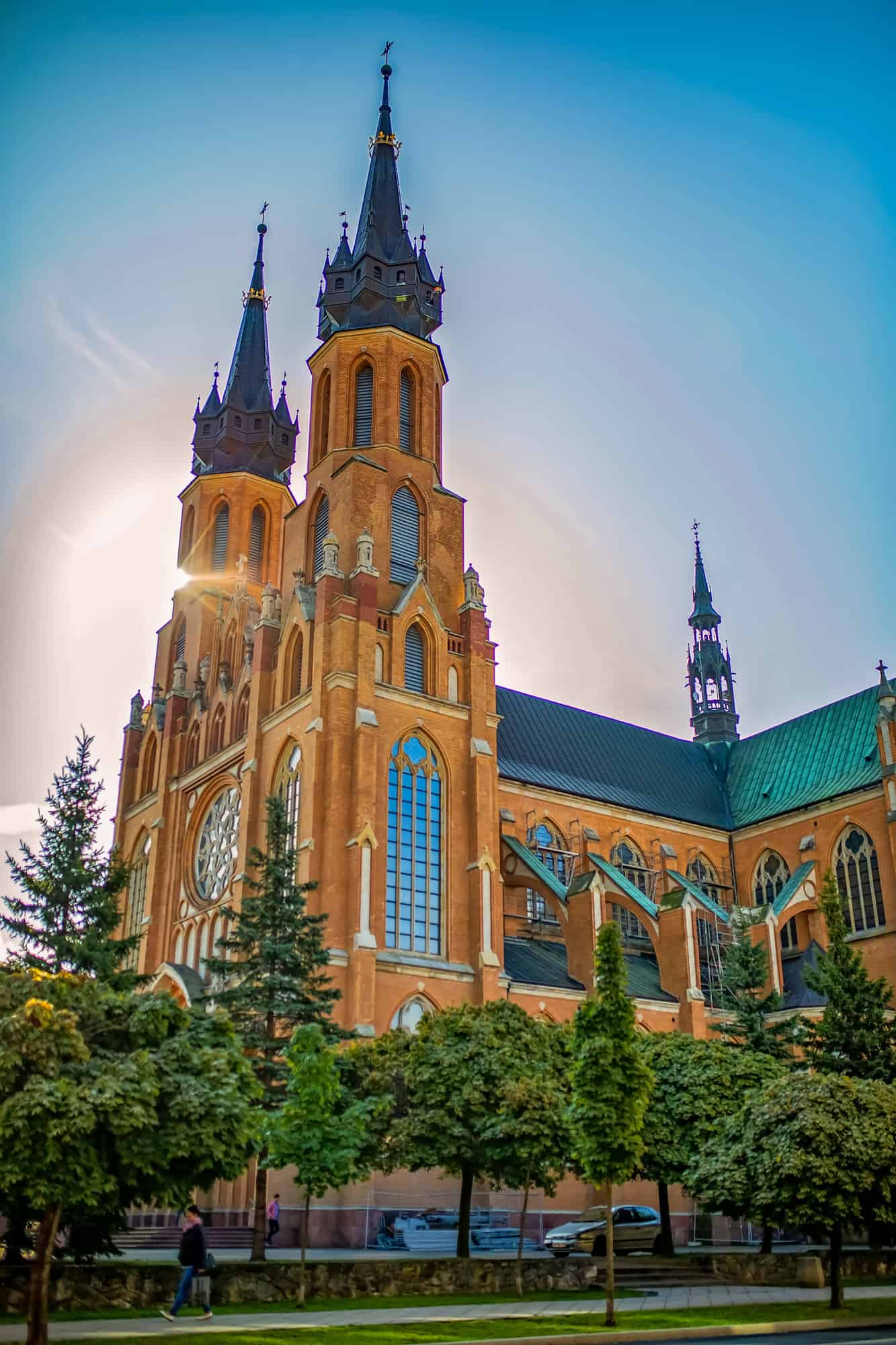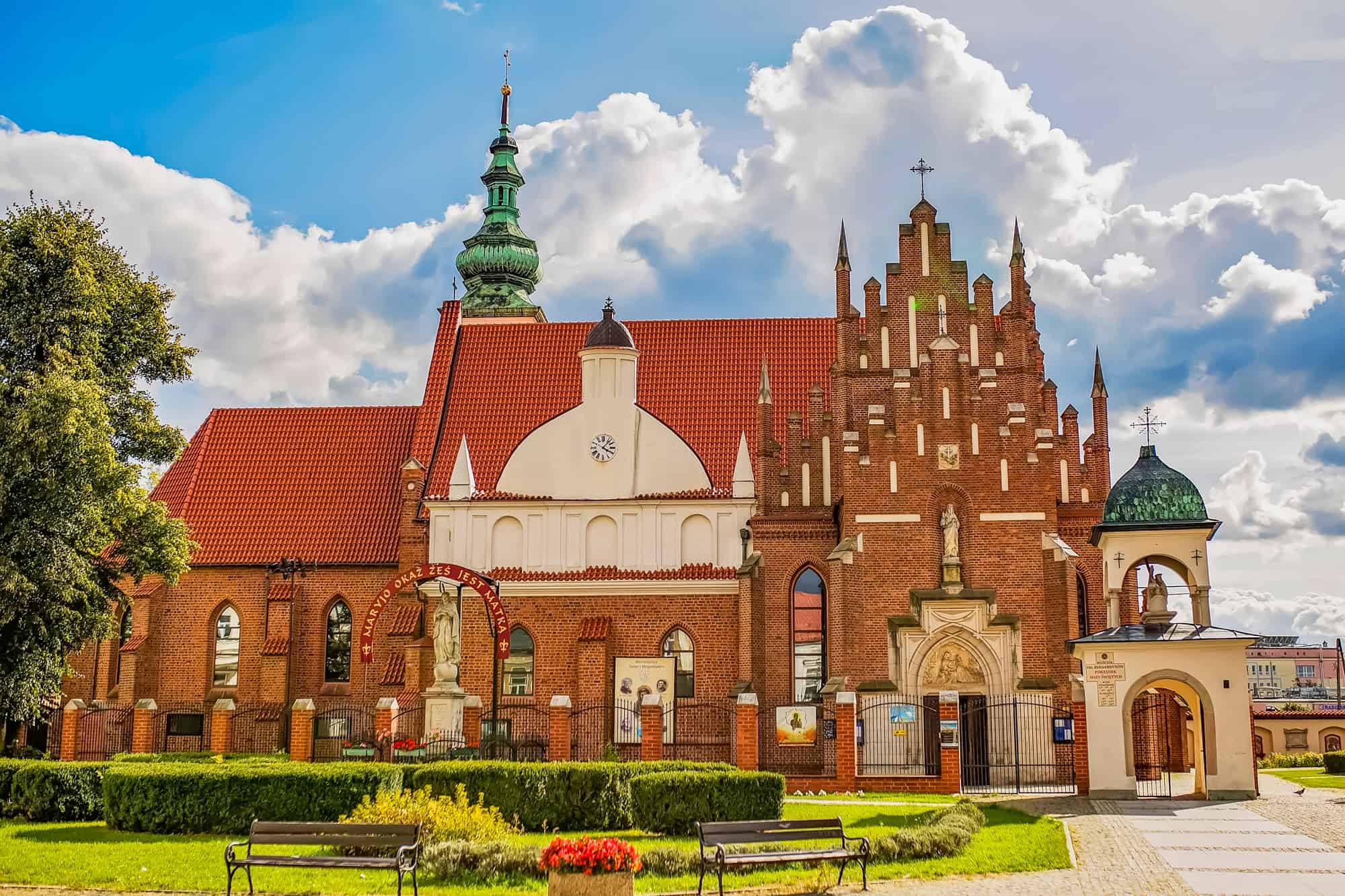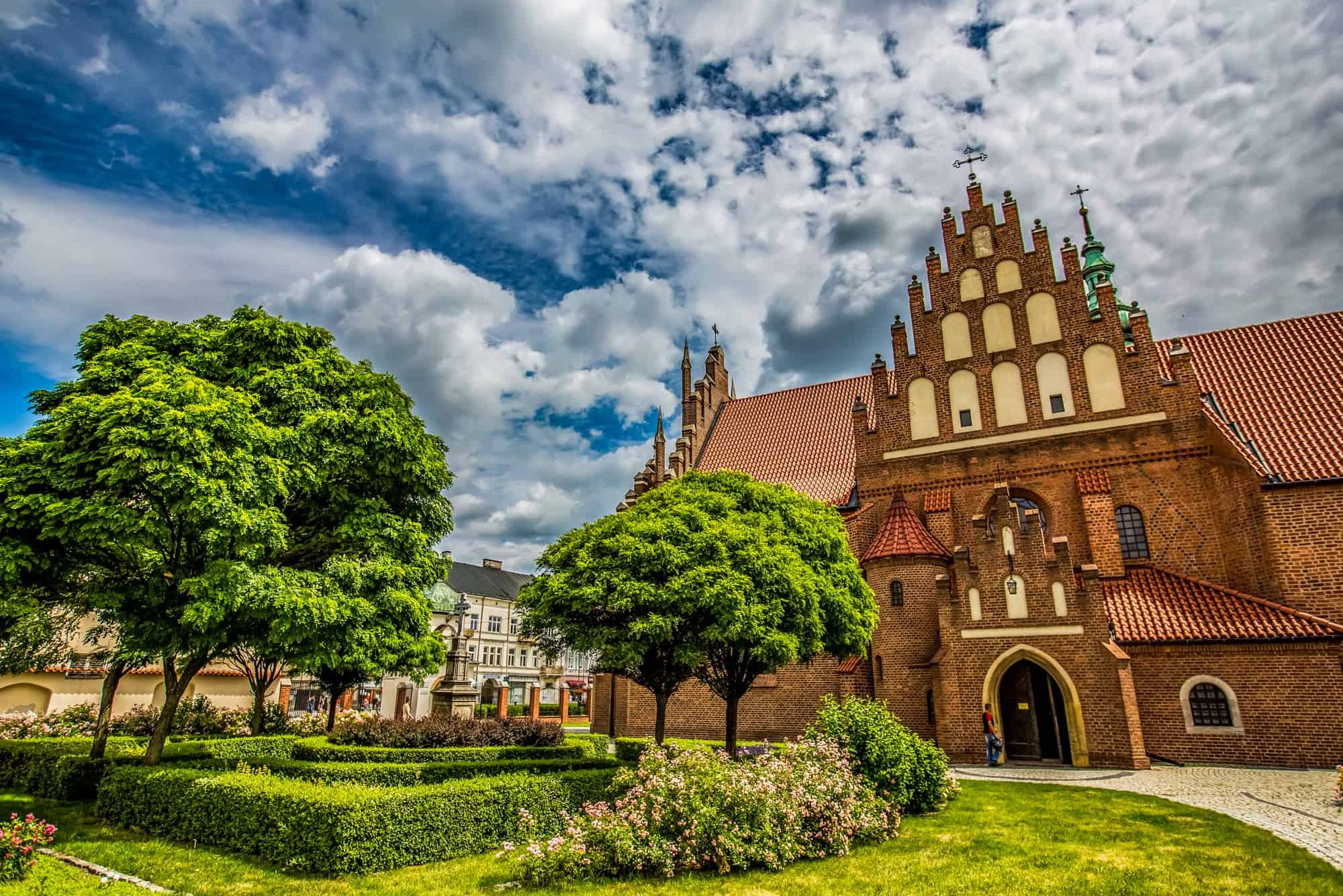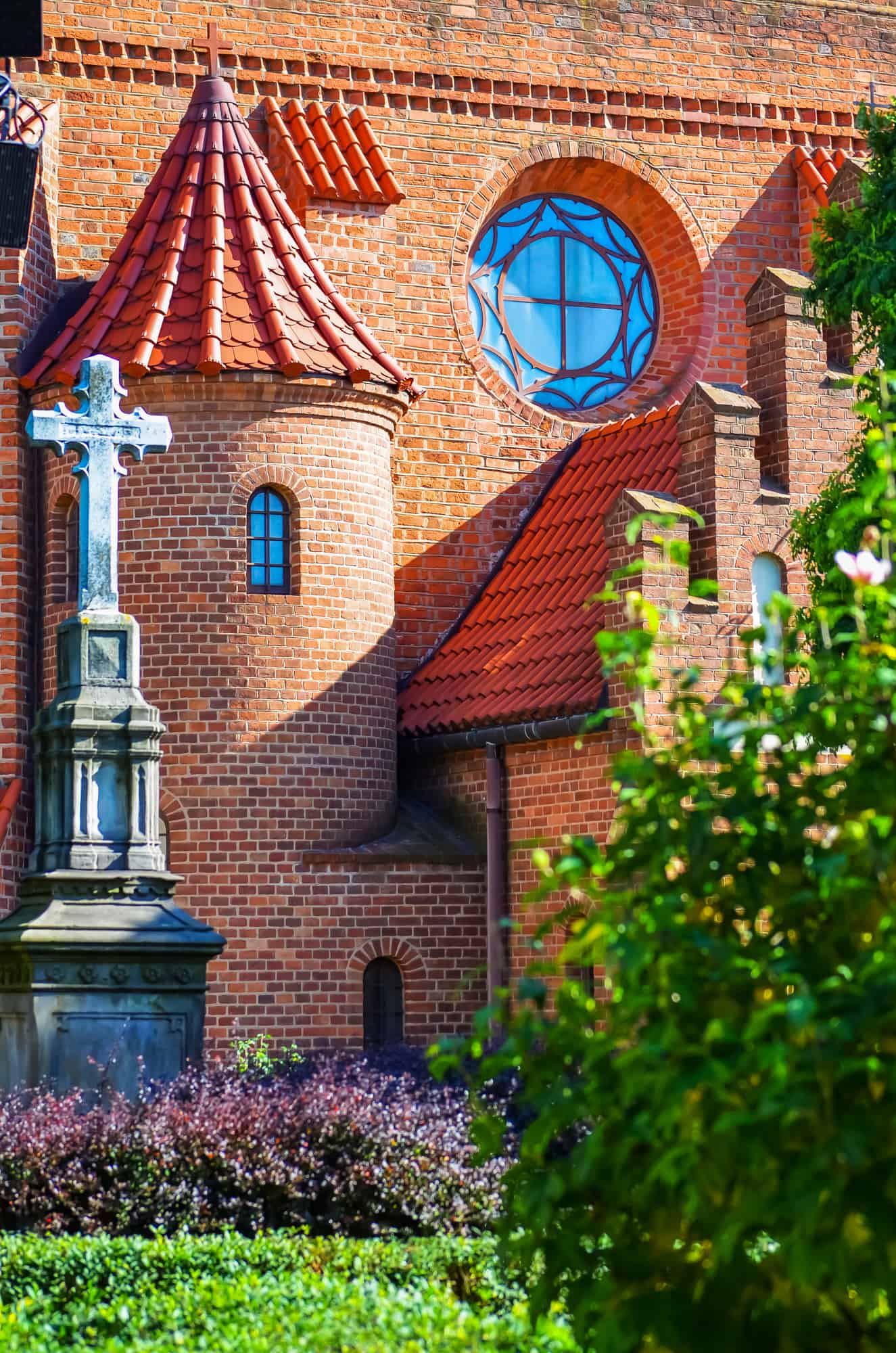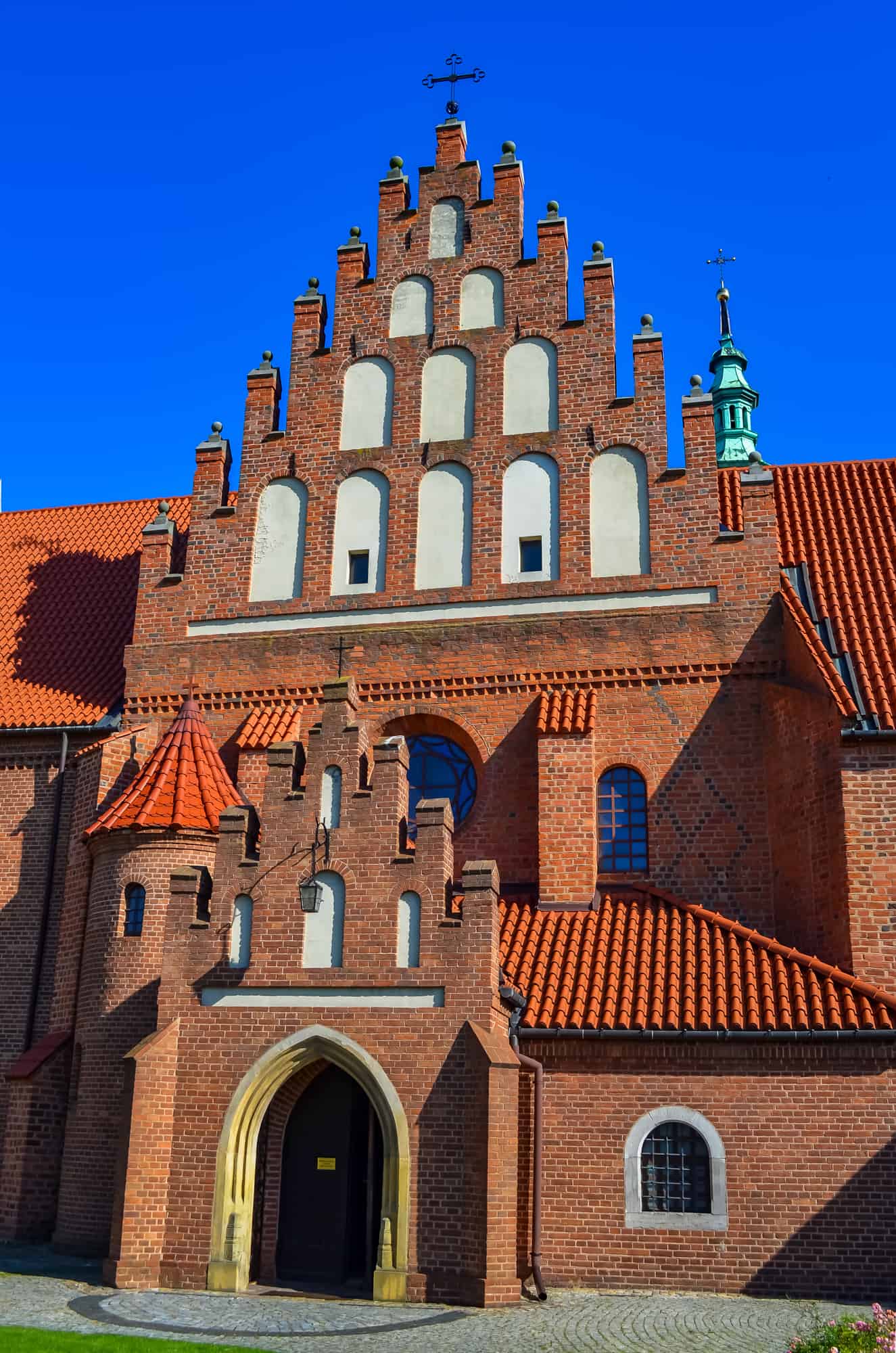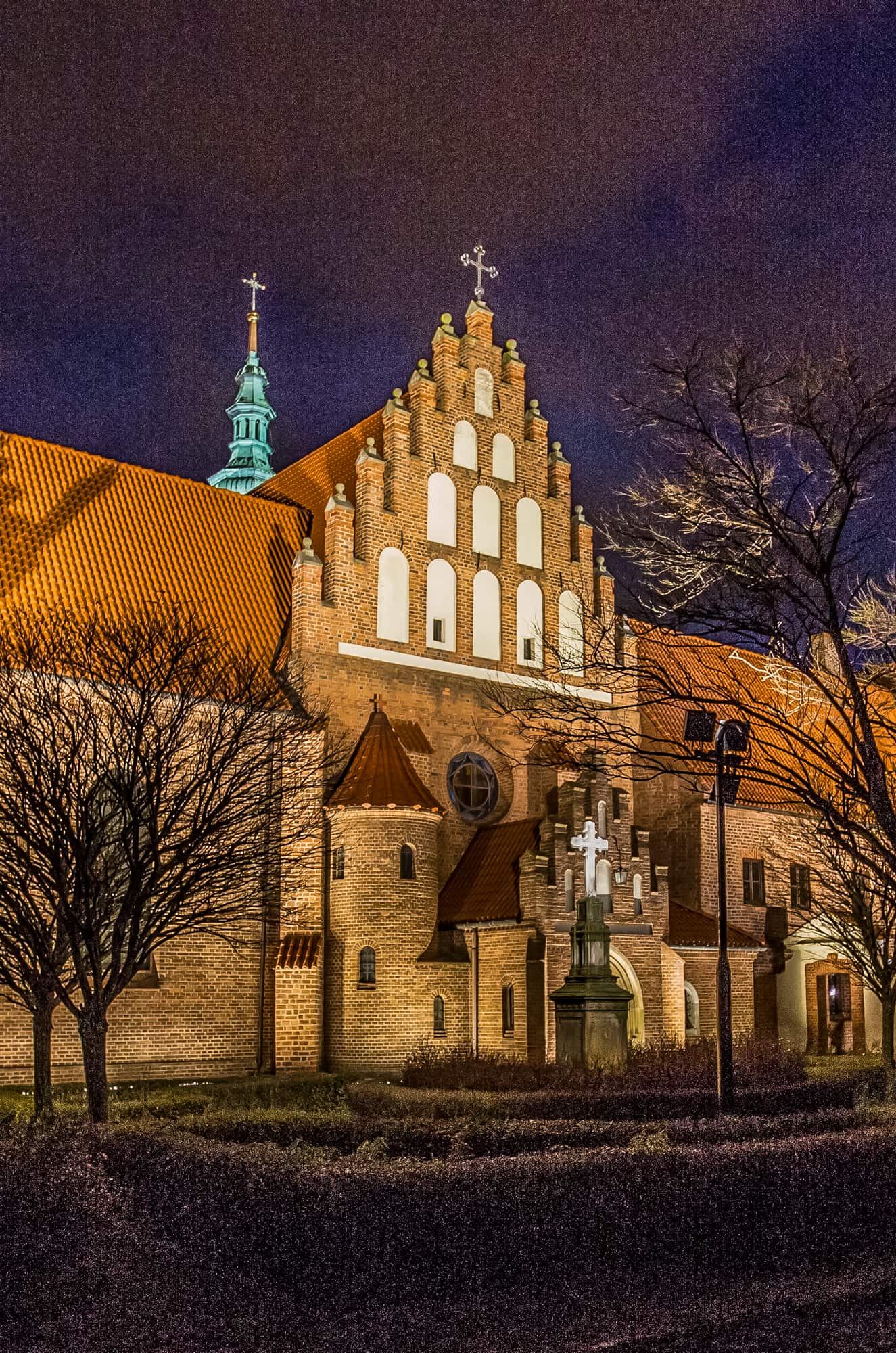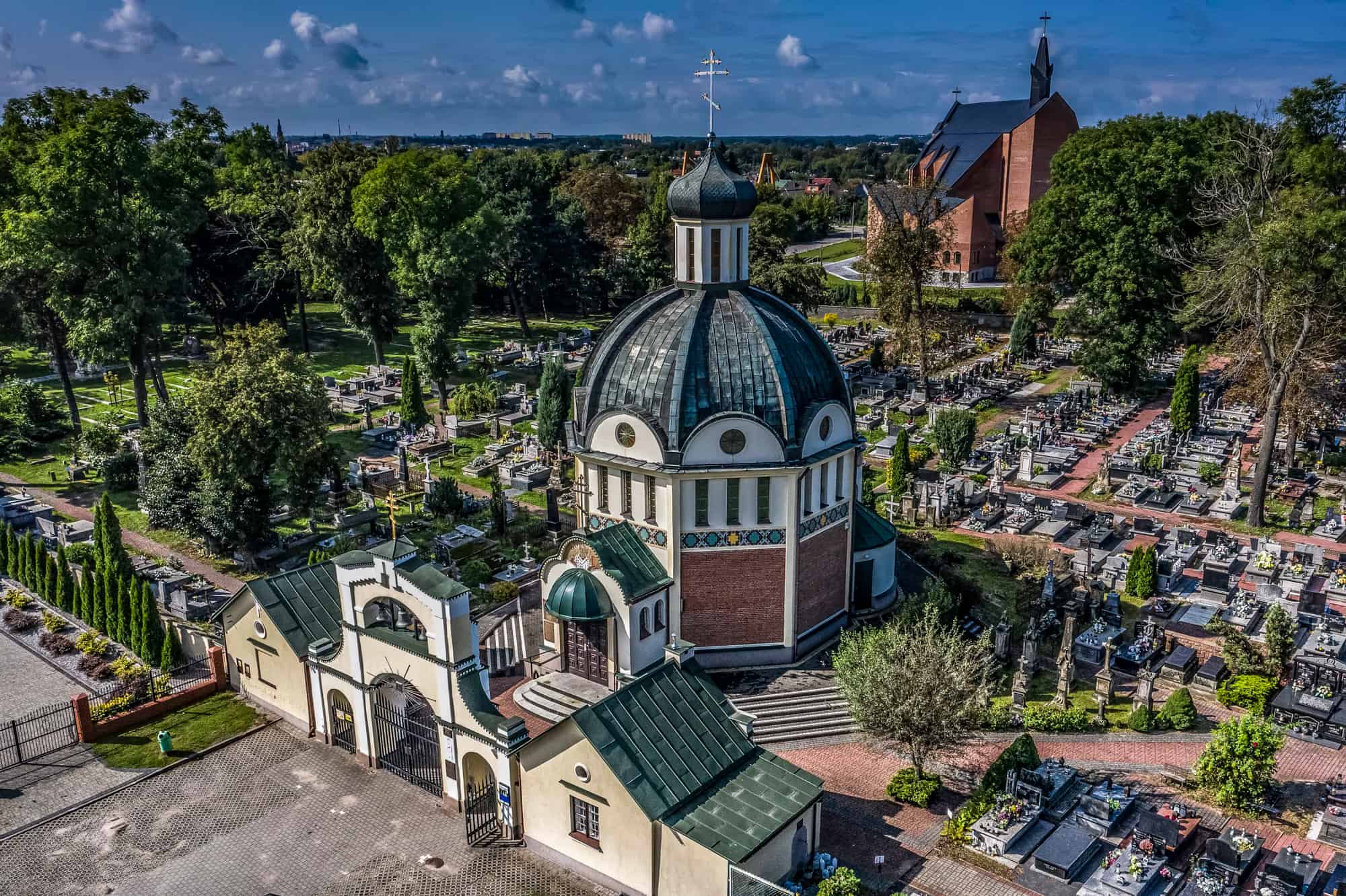PEARLS OF ARCHITECTURE
The Trzebiński Printing House
It is located at 28 Żeromskiego Street. Facilities of the old printing house owned by John Kanty Trzebiński. The printing house was originally established in 1818. 50 years later it became the property of Mr Trzebiński, who came from Kraków to take over the printing house after his father-in-law. Trzebiński was a hard-working and helpful man, a philanthropist and a patron of culture. He developed the printing house to such an extent that it employed 45 people.
His sons continued the family tradition. At the hundredth anniversary, one of the sons, Jan, decided to construct a new building, which was opened in 1920. The eclectic building was designed by Adolf Szyszko-Bohusz. A little bit earlier, that architect fully discovered the Romanesque Holy Virgin Mary Rotunda on the Wawel Hill in Kraków. That discovery was likely to be his inspiration as the building of the printing house has rocks fixed in the wall which imitate medieval walls, a stone portal (door frame), and an apse (semi-circular room).
The monogram of John Kanty Trzebiński is fixed over the entrance to the building. At the sides, there are images of two persons who rendered great service to the printing industry: John Gutenberg, inventor of a movable font, and Alojzy Senefelder, inventor of lithography.
Masovia Contemporary Art Centre “Elektrownia”
At the end of the 19th century, the rapid development of the industry generated a demand for electricity. In those days Radom was a seat of a province and many production plants were established in the town. The authorities of Radom found it necessary to construct a power plant and many companies applied for the licence. At the end of 1899, the consent to construct an electrical lighting system was granted. The authorities signed an agreement with the UNION Society, which was to construct a power plant at its own cost and risk. The power plant was launched on 15 March 1901. On that day the streets of Radom were lighted with 58 arc lamps.
That was the first power plant in the Polish Kingdom under Russian rule. It preceded the construction of power plants in Warsaw and Łódź.
The beautiful brick building is still a pride of the town today. In 2003 Andrzej Wajda suggested that a pavilion for one of the greatest collection of Polish contemporary art of the town should be built in Radom. Several months later, Kaja Koziarska, Radom inhabitant, suggested that the exhibits of contemporary art should be collected and displayed in the building of the power plant.
Finally, in 2005 the local parliament of the Mazowieckie Voivodeship established a new institution of culture called the Masovia Contemporary Art Centre “Elektrownia”. The first exhibition was opened a year later. In the years 2010-2014, the building of the institution was expanded.
Today, in the spacious modern interiors of the building, the museum holds exhibitions of Polish and foreign art, performances, meetings with artists and curators, sessions, and conferences. There is also a cinema in the building. The centre creates its own collection of contemporary art, as well.
Blessed Virgin Mary’s Care Cathedral and Cathedral Museum
At the end of the 19th century, the decision was made to carry out the greatest architectonic project in Radom in those times – the construction of the Blessed Virgin Mary’s Care Church. It was completed in 1911.
The style of the church facade draws on the St Florian Cathedral in the Praga district of Warsaw, and the towers on the higher tower of the St Mary’s Church in Kraków. The church has been a cathedral since 1992. It is a neo-Gothic building. Architect Józef Pius Dziekoński incorporated characteristics of the French Gothic style in his design. While original Gothic churches in Radom are “squat” and not soaring, when you enter the cathedral, you will be astonished with the height of the nave and the lightness and brightness of the interior. On the main wall of the building, there is a striking rosette (a window resembling a rose). The towers are 72 m high each. In the crosswise nave (transpet), an inquisitive tourist will find a sculpture of St Kazimierz, who was a prince of the Jagiellonian dynasty, the son of King Kazimierz Jagiellończyk, and the patron of Radom. The prince also accompanies the congregation and visitors in another place: on the baroque painting on the right of the transept (near the altar, where relics of the saint are kept).
The Cathedral Museum is located in former religious education rooms. The entrance to the museum is located inside the church. The exhibits are connected with the history of the cathedral and the Radom diocese (for example: old liturgical vestments, illuminated books, baroque tableware) and priests who became martyrs during the Second World War. The lime wood Gothic sculpture of the Radom Madonna is the most precious exhibit.
The Observants’ Monastery
It is a pearl of Gothic architecture. It was constructed outside the town walls in the 15th century on the initiative of King Kazimierz Jagiellończyk. Quite austere and modest interiors of the church hide several curiosities.
The first of them is the main altar, which is made of three sculptures: crucified Jesus, Mother of God and St John. It is probable that the altar was created in the workshop influenced by Wit Stwosz and was founded by Queen Elisabeth, wife of King Kazimierz Jagiellończyk and mother of St Kazimierz.
It is also worth paying attention to original benches in the Chapel of the Mother of God, which are the oldest furniture in Radom. They are over 500 years old. In turn, in the adoration chapel there is a sarcophagus with the ashes of Dionizy Czachowski, one of commanders of the January Uprising. Before the Second World War, the hero mausoleum was located in front of the monastery building, but it had to be demolished during the German occupation. The monks hid the ashes of Czachowski.
Another curiosity of the monastery is a kitchen building with a pyramid-shaped chimney of the oven. There are only few buildings of that type in Europe and it is likely to be the only one in Poland.
Lovers of old films will find the building in the firm entitled “Kontrybucja” of 1966.
Orthodox Church
Orthodox believers appeared in Radom after the November Uprising. There was a Russian garrison in the town and Russians had positions in the administration. They need a place of worship. The first Orthodox church was a baroque church at the Benedictines’ convent (at present the Holy Trinity Church at Kazimierza Wielkiego Square), which was transformed for Orthodox purposes in 1837. It was used by the Orthodox church for 50 years and then it was closed because of damages.
Another Orthodox church was organised in the former Piarists’ college (at present the building of the John Malczewski Museum at the market square). In the 19th century, there was a gymnasium there. The lecture theatre in the school was adapted for worship purposes. The Orthodox church was finally consecrated in 1888.
At the turn of the 19th and 20th century, the Orthodox church was constructed at Soborowy Square (at present Konstytucji 3 Maja Square). It was a typical eclectic Russian Orthodox church, whose shape was to underline the Russian domination over the town. The church was made of five towers and seven bells. After the independence was gained, it was transformed into a Catholic garrison church.
At present, the only Orthodox church in Radom is located at 15 Warszawska Street in the area of the Orthodox church cemetery. It was constructed at the end of the 20th century, in the years 1986-1992. The church has one dome and a contemporary iconostasis inside the building. The very cemetery is also historic and was created in the 19th century. Among interesting old gravestones, there is for example a grave of Colonel Szymon von Płotto. He was a hated-by-Poles commander of the General-Government military police and died during the attempt on his life organised by the Radom branch of the Polish Socialist Party in 1906. One of assassins was a 17-year-old Stanisław Werner, who was then sentenced for that act to death by means of shooting.
